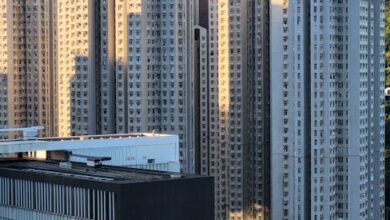The Vision Unfolding: A New Era for Cairo’s Commute

If you’ve ever found yourself caught in the pulsing, often overwhelming embrace of Cairo’s traffic, you know it’s more than just a commute; it’s an experience. The sheer volume, the symphony of horns, the strategic maneuvers required to navigate from point A to point B – it’s a daily challenge for millions. But what if there was a way to glide above it all, seamlessly connecting the historic heart of Greater Cairo with the burgeoning modern expansions of New Cairo and the ambitious vision of the New Administrative Capital (NAC)?
That vision is rapidly becoming a reality. Egypt is on the cusp of a major transformation in its urban mobility landscape, with the first phase of the East Cairo Monorail poised for inauguration on November 9, 2025. This isn’t just another train line; it’s a statement, a leap forward in the nation’s infrastructure development, promising to redefine how people live, work, and connect across one of the world’s most vibrant mega-cities. Imagine swapping bumper-to-bumper frustration for serene, elevated travel, gazing down at the city unfolding beneath you. That’s the promise of the monorail, and it’s a promise that carries significant weight for Egypt’s future.
The Vision Unfolding: A New Era for Cairo’s Commute
For decades, urban planners and residents alike have grappled with the challenges posed by Cairo’s rapid expansion. The city is a living organism, constantly growing, yet its existing infrastructure often struggles to keep pace. The solution isn’t just about adding more roads; it’s about intelligent, sustainable, and efficient public transport that can move people en masse while reducing environmental impact and improving quality of life.
The East Cairo Monorail is a direct response to this imperative. It’s designed to be a vital artery, pumping lifeblood into the city’s newer developments and linking them organically with established centers. Its very existence speaks to a national ambition to build forward-looking cities, characterized by accessibility and interconnectedness. This project is a clear signal that Egypt is investing heavily in modern solutions for modern challenges.
Bridging the Divide: Connecting Key Urban Hubs
The primary goal of this monorail isn’t just to ferry passengers; it’s to forge stronger links between distinct urban ecosystems. The route, spanning 56.5 kilometers in its initial phase, will extend from Stadium Station in Nasr City – a bustling hub within Greater Cairo – all the way to the Operations and Control Centre in the New Administrative Capital. This journey, punctuated by 22 strategically placed stations, will transform how residents perceive distances and travel times.
The Monorail’s arrival is especially critical for the New Administrative Capital. Conceived as Egypt’s smart, sustainable capital, the NAC is a monumental undertaking. For it to truly thrive, it needs robust, reliable, and rapid connections to the wider Cairo conurbation. The monorail provides precisely that, ensuring that the NAC isn’t an isolated enclave but an integrated part of Egypt’s economic and social fabric. It’s about making opportunities in the NAC accessible to everyone, regardless of where they live in Cairo.
Engineering Marvel: Deconstructing the Monorail’s Design and Scale
When we talk about a monorail, we’re discussing a distinct mode of transportation. Unlike traditional trains that run on two rails, a monorail system consists of a single beam track, with trains either straddling or being suspended from it. This design offers several advantages, particularly in densely populated urban environments: a smaller footprint, the ability to navigate tight turns and steep gradients, and often, a quieter, smoother ride above the urban fray.
The sheer scale of the East Cairo Monorail project is impressive. The first phase alone covers 56.5 kilometers, making it one of the longest monorail systems globally. Its development is a testament to significant international and national collaboration, spearheaded by a consortium comprising Alstom, a global leader in sustainable mobility, Orascom Construction, and Arab Contractors – two of Egypt’s most prominent construction firms. This partnership brings together world-class technology with deep local expertise, a combination vital for success in such a large-scale infrastructure endeavor.
Seamless Integration: The Backbone of an Interconnected City
A truly effective public transport system isn’t just a collection of independent lines; it’s a network. The East Cairo Monorail has been designed with this principle at its core, ensuring seamless integration with existing and planned transit options. At Stadium Station, it will connect directly with Metro Line 3, one of Cairo’s vital underground arteries, allowing passengers to effortlessly transfer between systems and extend their journey deeper into the city. This connection is a game-changer for accessibility.
Further afield, at the Arts and Culture Station within the NAC, the monorail will link with the Light Rail Transit (LRT). This multi-modal approach means that residents will have a range of options, making public transport a genuinely viable and attractive alternative to private vehicles. When the entire monorail network is fully completed, spanning 100 kilometers with 35 stations, it will form a crucial, interwoven element of Cairo’s integrated transport system, a true web of mobility that connects communities and opportunities.
Beyond the Rails: Economic Impact and Future Prospects
Infrastructure projects of this magnitude are rarely just about transportation. They are powerful catalysts for economic growth, urban development, and social change. The East Cairo Monorail is no exception. Its construction alone has generated thousands of jobs, injected significant capital into the economy, and fostered skills development in specialized fields of engineering and construction. This initial phase is just the tip of the iceberg in terms of economic benefit.
Looking ahead, the monorail is expected to unlock new investment opportunities along its route, spurring commercial and residential development in areas that were previously less accessible. It will enhance property values, attract businesses, and create vibrant new communities. For individuals, reduced commute times translate into more free time, less stress, and improved access to education, healthcare, and employment opportunities. It’s about more than just moving people; it’s about elevating lives.
Moreover, the monorail contributes significantly to Egypt’s broader sustainability goals. By offering a compelling alternative to private cars, it will help reduce traffic congestion, lower carbon emissions, and improve air quality in one of the world’s largest cities. This commitment to green transportation aligns with global efforts to combat climate change and build more resilient, environmentally conscious urban environments. It’s a stride towards a cleaner, more efficient, and smarter Cairo.
The launch of the East Cairo Monorail’s first phase in November 2025 is more than a construction milestone; it’s a pivotal moment in Egypt’s journey towards modernization and sustainable urban living. It symbolizes a country investing boldly in its future, addressing complex urban challenges with innovative, world-class solutions. As the sleek, elevated trains begin to glide across the Cairo skyline, they will carry not just passengers, but the hopes and aspirations for a more connected, efficient, and dynamic Egypt. This is the promise of progress, delivered one station at a time.





